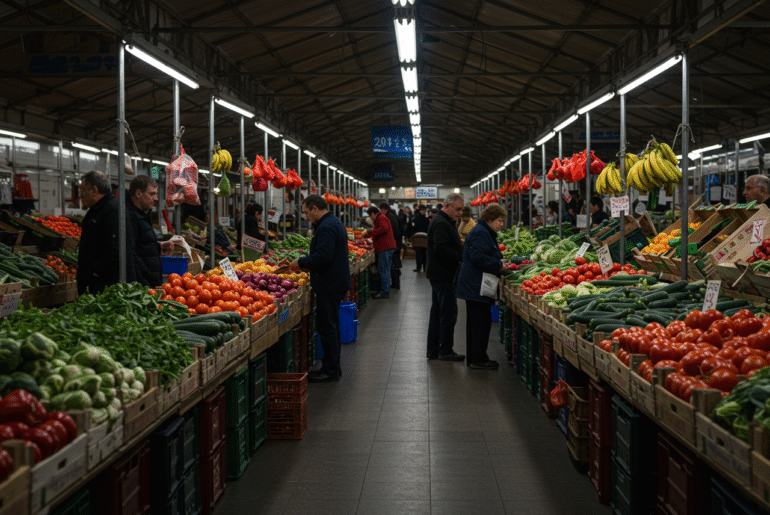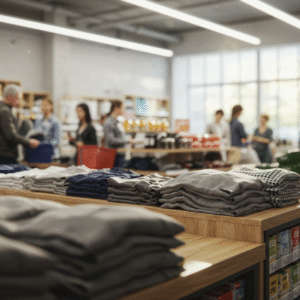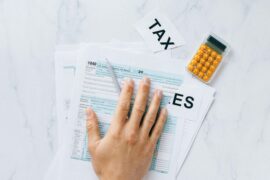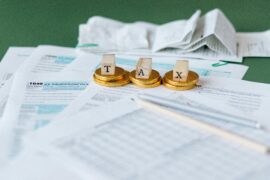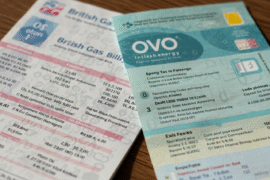This article may contain references to products or services from one or more of our advertisers or partners. We may receive compensation when you click on links to those products or services. Nonetheless, our opinions are our own.
The information presented in this article is accurate to the best of our knowledge at the time of publication. However, information is subject to change, and no guarantees are made about the continued accuracy or completeness of this content after its publication date.
- Highlights on Consumer Surplus
- Introduction
- What Consumer Surplus Means in Economics
- How Willingness to Pay Affects Consumer Surplus
- Main Traits of Consumer Surplus
- Link Between the Demand Curve and Consumer Surplus
- Consumer Surplus as Seen Through Demand Curve
- What Affects the Size of Consumer Surplus
- Ways to Calculate Consumer Surplus
- Final Thoughts on Consumer Surplus Economics
- Frequently Asked Questions
- Recommended Reads
Highlights on Consumer Surplus
- Consumer surplus is the extra money that people save when they pay less than what they are ready to spend.
- It connects with the line on the graph that shows how many people want to buy something, and it shows how what people are ready to pay can change what they do in the market.
- You can figure it out by looking at triangle-shaped parts on two-line graphs and by looking at simple real-life cases.
- Things like price going up or down, or other choices to buy, can change how big the surplus is.
- Consumer surplus is important when we want to check how well a market works and how good it is for people.
- FAQs help people understand the way to figure it out, the way prices play a part, and how this is not the same as what sellers get.
Introduction
Consumer surplus is a major idea in economics. It shows what people get when they pay less for something than what they are ready to pay. This extra gives us a look at how good things are for people in the market. It also shows how the price you pay can change what you get. Knowing about consumer surplus helps people check if rules or changes work, how prices should be set, and how well the market works.
What Consumer Surplus Means in Economics
Consumer surplus is the value people get when they buy something and pay less than what they are willing to spend on it. On a demand curve, it is shown as the space that is between the curve and the market price.
This measure shows how much money people get from deals. It helps businesses and people who make laws to use data to help them decide. It also shows some hidden value that people get from markets.
How Willingness to Pay Affects Consumer Surplus
Willingness to pay shows how much a person thinks a product is worth. Many people are ready to spend more than the usual price because they feel they will get something good out of what they buy.
For example, if a product is worth $100 to someone but the price is $60, the person has a consumer surplus of $40. This shows how people look at value and feel good about what they get for the money they spend.
Willingness to pay changes because of things like how many people want something, how much money they have, and what they like. When prices go down, consumer surplus goes up. This is good for people who already buy the product and for new buyers as well. It helps the whole economy to be better.
Voted "Best Overall Budgeting App" by Forbes and WSJ
Monarch Money helps you budget, track spending, set goals, and plan your financial future—all in one app.
Get 50% OFF your first year with code MONARCHVIP
Main Traits of Consumer Surplus
- Shows the extra gain people get when they pay less than the most they would give for something.
- Goes up when market prices go down, making life better for people and groups.
- Shows the gap between what people think something is worth and what they pay for it in the market.
- Affects how businesses set prices and how rules and plans are checked.
Consumer surplus shows how happy people feel after shopping. It also tells us how well the market works as a whole. When you add up all the extra value that buyers get, the total amount shows how much everyone gains together in the market. This helps us see if people, as a group, do well when they buy and sell in the market.
Link Between the Demand Curve and Consumer Surplus
The demand curve shows how the price and the number of items people want to buy are linked. It goes down from left to right. This means when prices go down, more people want to buy. That is because each extra item gives them a bit more benefit.
At the price where things are balanced, the extra value for people who buy is shown as a triangle shape. This triangle is under the line that shows what people want to buy and above the price line. This area shows the extra something people get when they make a purchase. It also helps people see if the market is doing well or not.
Consumer Surplus as Seen Through Demand Curve
The table below shows how you can understand consumer surplus by looking at the demand curve:
| Element | Description |
|---|---|
| Base | Difference between willingness to pay and market price |
| Height | Quantity purchased at equilibrium |
| Surplus Formula | Area = ½ × base × height |
Example: Let’s say the highest price allowed is $80. The actual selling price in the market is $50. There are 1,000 units sold.
Surplus = ½ × (80 – 50) × 1,000 = $15,000
This calculation helps show how happy people feel when they take part in the market at certain prices.
What Affects the Size of Consumer Surplus
Many things can change how much extra benefit people get in different markets:
- Price changes: When prices go down, people get more value for their money. If prices go up, it takes away some of that value.
- Availability of substitutes: When there are other things people can buy instead, they care more about prices. This can lower how much extra value they get.
- Arrival of new consumers: A drop in price brings in more buyers. This helps to make the total value for all buyers go up.
- External conditions: Things like rising costs, how good a product is, or trouble in the market can change value for buyers in an indirect way.
Keeping track of these things can help businesses and policymakers see how happy people are with what they get and spot changes in the market. Markets that have more people or companies trying to win customers’ business usually give people more extra value. When there is only one company in charge, people may get less.
Ways to Calculate Consumer Surplus
Consumer surplus is usually found by looking at the area of a triangle between the demand curve and the market price. This calculation is a good way to see the economic value. It can help with pricing strategies too.
Simple Calculation Using Actual Data
Follow these steps to compute consumer surplus:
- Find the most money that people are ready to spend.
- Figure out the real price in the market and the number sold.
- Use this formula: Consumer Surplus = ½ × (Willingness to Pay – Market Price) × Quantity
Example: If laptops are sold for $800 each, and people are ready to pay as much as $1,200 for one, and 2,000 are sold:
- Base = $1,200 minus $800 equals $400
- Height is 2,000 units
- Surplus is half of 400 times 2,000, which is $400,000
This shows the extra value that people get in a market.
Consumer Surplus in U.S. Movie Sales
In the U.S. cinema market, the ticket price is set at $10. But people are willing to pay up to $15 for one.
If 1,000 tickets are sold daily:
- The base is $15 minus $10, so it is $5.
- The height is 1,000 tickets.
- To find the surplus, use ½ times 5 times 1,000. That gives you $2,500.
If rules push prices up to $12, then the surplus goes down to $1,500. This shows how government controls on prices can lower total welfare in the market. It also shows how this can affect how the market works.
Final Thoughts on Consumer Surplus Economics
Knowing about consumer surplus is important when you want to check how healthy the market is and how happy buyers feel. It shows the value people get when they buy something for less than what they are willing to pay. This is also one way to see how well the market is working.
By looking at demand curves and using surplus formulas, businesses can make better choices about pricing. Policymakers can also use these tools to see the effects of their decisions. No matter if you want to improve your plan or check an economic policy, consumer surplus helps you see how value spreads out in the market.
Frequently Asked Questions
What is the formula for calculating consumer surplus?
The formula is ½ × (Willingness to Pay – Market Price) × Quantity. This formula helps measure the area under the demand curve and above the market price. It is a simple way to see the extra value that people receive from buying at a lower price. This value can guide business decisions and economic analysis.
How does a change in price affect consumer surplus?
When the price goes down, more people can buy the item. The people who already buy it feel good about the lower price, and new people start to buy as well. This leads to more consumer surplus and better value for them. When the price goes up, people feel less happy, and some may stop buying. This lowers the consumer surplus and is not good for people shopping.
Can you give a simple example of consumer surplus?
If you see a bike selling for $300, but you feel it is worth $500 to you, there is a difference of $200. That $200 is called consumer surplus. It shows the extra value people get when they buy something for less than what they are willing to pay. This concept shows how pricing impacts satisfaction and value in everyday purchases.
Why is consumer surplus important for market efficiency?
Consumer surplus shows us how good a market is at matching buyers with sellers, setting prices, and meeting needs. A bigger consumer surplus means the market is doing a good job using its resources, so people feel better off and the economy works well. This is helpful for checking how fair or effective an economic policy is.
How is consumer surplus different from producer surplus?
Consumer surplus is what you get when you pay less for something than you thought you would. Producer surplus is what they make when they sell something for more than the lowest price they would take. When you put both together, you get the total economic surplus. This total gives a full picture of how much value is created in the market for everyone.

Reviewed and edited by Albert Fang.
See a typo or want to suggest an edit/revision to the content? Use the contact us form to provide feedback.
At FangWallet, we value editorial integrity and open collaboration in curating quality content for readers to enjoy. Much appreciated for the assist.
Did you like our article and find it insightful? We encourage sharing the article link with family and friends to benefit as well - better yet, sharing on social media. Thank you for the support! 🍉
Article Title: What Is Consumer Surplus and Why It Matters in Economics
https://fangwallet.com/2025/07/16/what-is-consumer-surplus-and-why-it-matters-in-economics-2/The FangWallet Promise
FangWallet is an editorially independent resource - founded on breaking down challenging financial concepts for anyone to understand since 2014. While we adhere to editorial integrity, note that this post may contain references to products from our partners.
The FangWallet promise is always to have your best interest in mind and be transparent and honest about the financial picture.
Become an Insider

Subscribe to get a free daily budget planner printable to help get your money on track!
Make passive money the right way. No spam.
Editorial Disclaimer: The editorial content on this page is not provided by any of the companies mentioned. The opinions expressed here are the author's alone.
The content of this website is for informational purposes only and does not represent investment advice, or an offer or solicitation to buy or sell any security, investment, or product. Investors are encouraged to do their own due diligence, and, if necessary, consult professional advising before making any investment decisions. Investing involves a high degree of risk, and financial losses may occur including the potential loss of principal.
Source Citation References:
+ Inspo
There are no additional citations or references to note for this article at this time.
